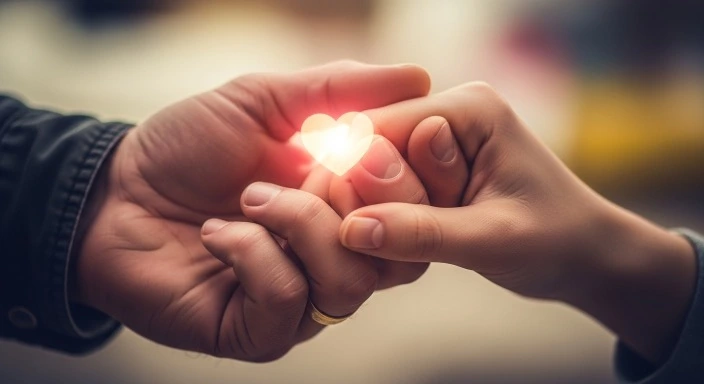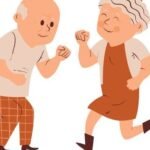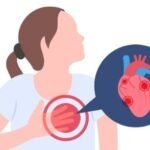The science of love hormones
Love — that flutter in your chest, that rush when you see someone special, or even that deep calm when you’re close to someone you trust. We talk about love as a feeling, a mystery, or a choice — but science shows it’s also a chemical experience happening inside your body.
From butterflies in your stomach to long-term bonding, your brain releases powerful messengers known as love hormones. These chemicals influence attraction, attachment, desire, and trust — shaping how we connect with others.
In this guide, we’ll dive deep into the fascinating science of love hormones — what they are, how they work, and why they matter not only in romance but in every kind of human connection.
What Exactly Are “Love Hormones”?
The term “love hormones” isn’t an official medical label — but it’s a popular way to describe certain chemicals that influence emotions and relationships.
These include:
- Oxytocin — the “bonding hormone”
- Dopamine — the “pleasure and reward” chemical
- Serotonin — the “mood stabilizer”
- Endorphins — the natural “painkillers” and comfort givers
- Vasopressin — the “commitment hormone”
Each plays a unique role in shaping attraction, affection, and long-term attachment. Understanding them helps us decode why we fall in love, why it feels so good, and why heartbreak hurts so much.
Oxytocin: The Bonding Hormone
The science of love hormones

The science of love hormones
Oxytocin is often called the “cuddle chemical.” It’s released during hugging, touch, sex, and even simple acts of trust.
When oxytocin levels rise, people feel more connected, safe, and emotionally close. It’s especially powerful in deep relationships — between partners, parents and children, and even close friends.
Interestingly, oxytocin is also released during childbirth and breastfeeding, strengthening the mother-infant bond. According to a study by the National Library of Medicine, oxytocin increases empathy and reduces stress by calming the nervous system.
Fun fact: You don’t need romance to boost oxytocin — spending time with a pet, volunteering, or even listening to music can increase it too.
If you’re curious how hormones influence other aspects of well-being, read our in-depth post How Hormones Affect Your Body and Mind: What You Need to Know for Better Health for a broader view of the hormonal system.
Dopamine: The Spark of Desire and Reward
Ever felt that rush when you get a text from someone you like? That’s dopamine — your brain’s motivation and reward hormone.
It drives excitement, curiosity, and focus. When you fall in love, dopamine levels spike, making everything feel more thrilling. You literally become addicted to the person because your brain treats love like a reward.
Dopamine also explains why love can feel like a high — and why losing it feels like withdrawal. The brain’s reward system links dopamine to pleasure and learning, which means early-stage love is both emotional and biological.
A Harvard Health study found that dopamine Dopamine activates the reward circuit, helping to make love a pleasurable experience.
Over time, dopamine balances out as oxytocin and vasopressin take over to deepen long-term attachment.
Serotonin: The Mood Balancer
Serotonin stabilizes mood, helps regulate anxiety, and keeps emotions steady. But when people first fall in love, serotonin levels actually drop — mimicking the obsessive focus seen in anxiety or OCD patterns.
That’s why new love can make you daydream, overthink, or constantly check your phone. Your brain becomes preoccupied.
Once relationships mature, serotonin levels rise again, helping couples feel secure and emotionally balanced.
Serotonin also explains why exercise, sunlight, and healthy food can make you more emotionally open — they raise serotonin naturally.
Endorphins: The Calm After the Storm
While dopamine gives you the thrill, endorphins give you the warmth. They’re your body’s natural painkillers, released through laughter, exercise, or even a warm hug.
Endorphins create that peaceful feeling of contentment you get when you’re close to someone you trust — long after the dopamine “high” has faded.
That’s why long-term relationships often feel calmer and more secure. The love may feel less intense but more comforting— endorphins at work.
Vasopressin: The Commitment Hormone
If dopamine brings attraction and oxytocin brings bonding, vasopressin helps build commitment.
It’s associated with monogamy and long-term attachment. In animal studies, higher vasopressin levels correlated with stronger pair bonds and more protective behaviors toward partners.
For humans, it’s part of why we crave consistency and loyalty in relationships — the brain uses vasopressin to reinforce emotional security and stability.
How These Hormones Interact: The Chemistry of Connection
Love isn’t caused by one hormone — it’s a dance between several systems:
| Hormone | Main Role | When It Peaks |
| Dopamine | Desire, excitement | Early attraction |
| Oxytocin | Trust, bonding | Physical touch, intimacy |
| Serotonin | Mood balance | Emotional security |
| Endorphins | Comfort, calm | Long-term connection |
| Vasopressin | Commitment | Stable relationships |
When these systems are balanced, you feel connected and emotionally fulfilled. But when one is off — for instance, low serotonin or oxytocin — you may feel anxious, lonely, or insecure even in a relationship.
The Brain’s “Love Network”
Researchers using fMRI scans discovered that love lights up areas of the brain linked to motivation and reward — the ventral tegmental area (VTA) and caudate nucleus.
These same areas activate when people experience pleasure from food, music, or accomplishment — confirming that love is both emotional and neurological.
This is why emotional attachment can literally change how your brain processes pleasure and pain.
Love Beyond Romance: Family, Friends & Pets
While romantic love gets the spotlight, the same hormones drive all forms of deep connection.
- Parents release oxytocin when cuddling their babies.
- Friends boost dopamine through laughter and shared joy.
- Pets increase oxytocin and endorphins just through gentle interaction.
Even small gestures like smiling at a stranger can create microbursts of oxytocin and serotonin — showing how connection, in all forms, heals and energizes the brain.
How to Naturally Boost Love Hormones
The science of love hormones

The science of love hormones
Want to strengthen your emotional well-being? You can enhance these hormones naturally.
1. Physical Touch
Hugs, hand-holding, or even self-massage raise oxytocin and endorphins.
2. Exercise
Cardio or yoga increases serotonin and endorphins — making you calmer and happier.
3. Healthy Food
Dark chocolate, bananas, and nuts support dopamine production.
4. Sleep and Sunlight
Both help regulate serotonin and oxytocin, improving mood and energy.
5. Gratitude and Mindfulness
Positive reflection activates dopamine and oxytocin pathways.
For a practical guide, read Gratitude Examples: How to Rewire Your Mind for Positivity — it complements this post perfectly.
6. Kindness and Connection
Acts of kindness raise oxytocin and serotonin in both giver and receiver — a win for everyone.
When Hormones Go Out of Balance
If your mood or relationships feel off, hormone imbalances could play a role.
Low oxytocin or serotonin can lead to emotional numbness, anxiety, or disconnection.
Chronic stress suppresses dopamine and oxytocin, which may make love feel less rewarding.
Simple lifestyle shifts — better sleep, physical affection, and stress reduction — can help restore harmony.
If you suspect deeper hormonal issues, always consult a healthcare provider or endocrinologist. You can also refer to the NIH research on oxytocin and human bonding for scientific insight into treatment implications.
The science of love hormones
The Takeaway: Love Is Biology — and Beyond
Love is powerful because it’s both a feeling and a physiological event. Your brain chemistry and hormones choreograph attraction, connection, and long-term bonding.
Understanding love hormones reminds us that connection is not weakness — it’s a biological necessity. Touch, trust, empathy, and gratitude literally nourish your body.
So the next time you fall in love, hug your child, or laugh with a friend, remember — your body is doing the beautiful work of chemistry and care.
Love is, quite literally, the most healing science of all.
Our Authority Sources
- https://pmc.ncbi.nlm.nih.gov/articles/PMC2795557/
- https://hms.harvard.edu/news-events/publications-archive/brain/love-brain
- https://pmc.ncbi.nlm.nih.gov/articles/PMC5734372/
- https://www.apa.org/monitor/feb07/morethan
- https://www.frontiersin.org/articles/10.3389/fpsyt.2020.00710/full







